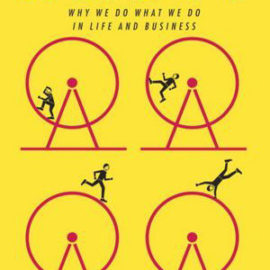Want to learn the ideas in Team of Teams better than ever? Read the world’s #1 book summary of Team of Teams by Stanley McChrystal here.
Read a brief 1-Page Summary or watch video summaries curated by our expert team. Note: this book guide is not affiliated with or endorsed by the publisher or author, and we always encourage you to purchase and read the full book.
Video Summaries of Team of Teams
We’ve scoured the Internet for the very best videos on Team of Teams, from high-quality videos summaries to interviews or commentary by Stanley McChrystal.
1-Page Summary of Team of Teams
Overview
General Stanley McChrystal’s book, Team of Teams, is about the process he used to restructure the Joint Special Operations Command and make it more adaptable. The military was efficient at fighting wars but not effective against Al-Qaeda in Iraq. General McChrystal began questioning whether a rigid structure inhibited their ability to respond quickly to threats and capture AQI leader Abu Musab al-Zarqawi.
Modern military management originated with Frederick Winslow Taylor’s work at the 1900 World’s Fair. He believed that there is a right way to do anything, and he built reductionist processes to streamline how production employees work. In these schemes, employees focus only on their role and don’t have to communicate with other employees or ask questions of their managers about the bigger picture.
Taylor’s ideas revolutionized the way people work. His ideas were implemented in soldiers’ lives through rigorous routines, uniforms and equipment, and a lack of communication and involvement with decision-making processes. Communication problems between intelligence operators and analysts in Iraq contributed to the failure to prevent 9/11 terrorist attacks on World Trade Center towers.
General McChrystal describes how he built his team of teams, which was inspired by the Navy SEAL training and Brigham and Women’s Hospital. The principles he used to build that team were awareness, empowerment, and a common purpose in an unpredictable environment where hands-on command management styles are rewarded.
Key Takeaways
An efficient system is not necessarily effective. For example, if the output of a system doesn’t meet the needs of its users or it’s not using available resources effectively, then it’s considered inefficient. In order to make an ineffective system more effective, you can sometimes reduce its efficiency by adding new features that improve performance and usability.
The reductionist approach revolutionized engineering and spread to other tasks. However, this method does not work in every situation.
Many processes in the world today are more complex than they were before the information age, making them highly unpredictable. Therefore, reduction is less effective in complicated systems that are more predictable than complex ones.
A system that is robust can overcome a specific obstacle, but it may not be resilient enough to adapt to other obstacles. A system that is both robust and resilient will have the ability to overcome unexpected challenges. However, making a system more resilient may mean lowering its efficiency in overcoming the challenge for which it was designed because of all the additional effort required by this resilience.
A team needs to have a sense of purpose and trust between members in order for them to be successful. In order to accomplish more than one person can do alone, it’s important that teams communicate well with each other. If they don’t trust each other, then the team won’t work together effectively. A team of teams consists of groups that are specialized and cohesive but also communicate well with each other throughout their task so they can complete it successfully.
The physical layout of working spaces can encourage or discourage collaboration and communication. Cubicles and individual offices discourage collaboration, while open floor plans allow employees to see each other, talk casually, and trust one another. If members of an organization do not trust one another they will not share information with one another or willingly give up access to resources when it is beneficial for the common purpose.






